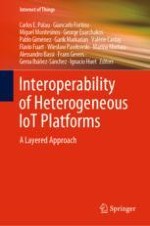2021 | Book
Interoperability of Heterogeneous IoT Platforms
A Layered Approach
Editors: Carlos E. Palau, Giancarlo Fortino, Miguel Montesinos, George Exarchakos, Pablo Giménez, Garik Markarian, Valérie Castay, Flavio Fuart, Wiesław Pawłowski, Marina Mortara, Alessandro Bassi, Frans Gevers, Gema Ibáñez-Sánchez, Ignacio Huet
Publisher: Springer International Publishing
Book Series : Internet of Things
